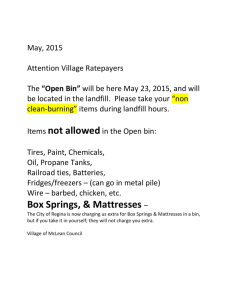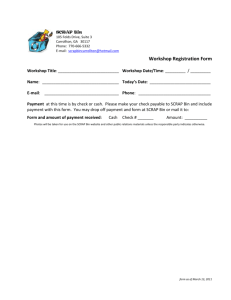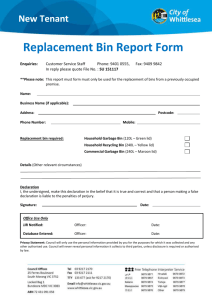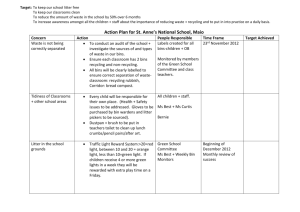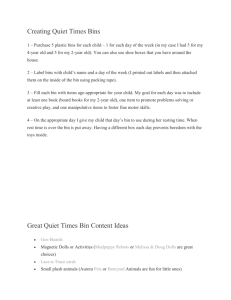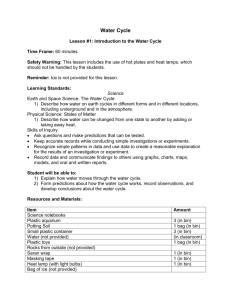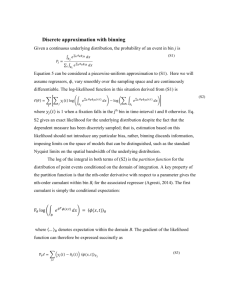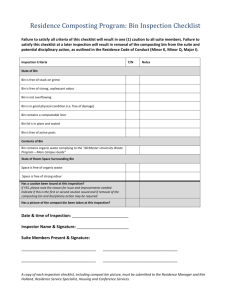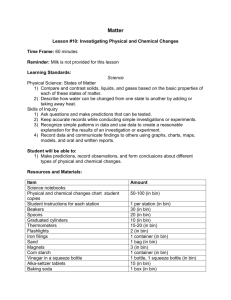Ongoing Weather Activities - Center for Learning in Action
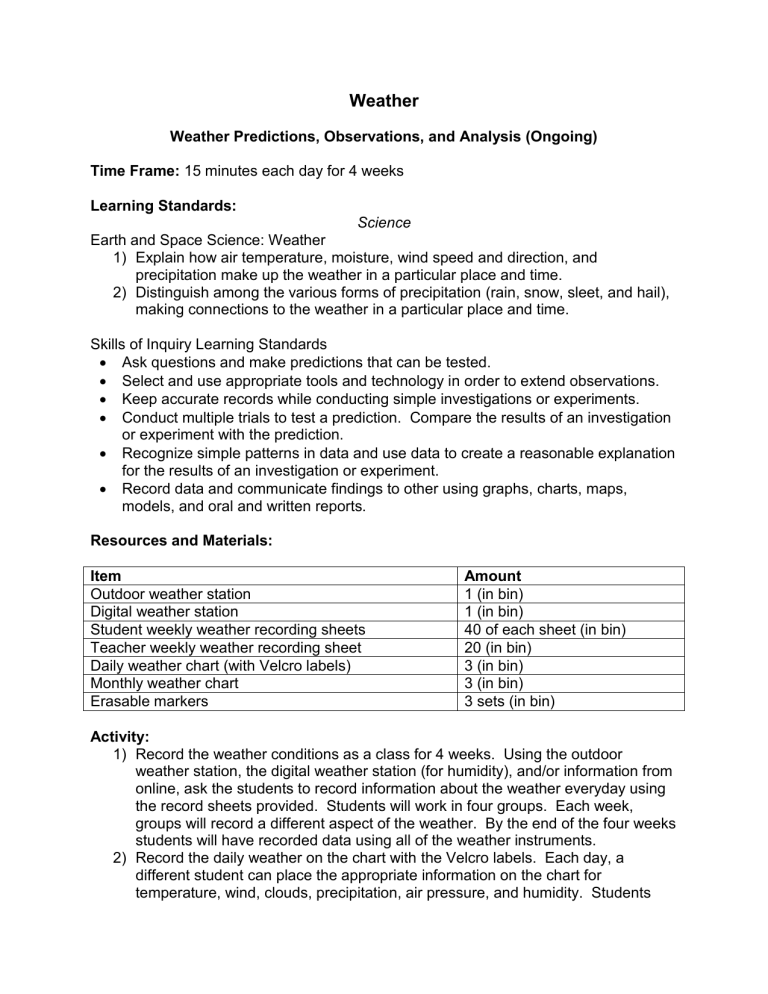
Weather
Weather Predictions, Observations, and Analysis (Ongoing)
Time Frame: 15 minutes each day for 4 weeks
Learning Standards:
Science
Earth and Space Science: Weather
1) Explain how air temperature, moisture, wind speed and direction, and precipitation make up the weather in a particular place and time.
2) Distinguish among the various forms of precipitation (rain, snow, sleet, and hail), making connections to the weather in a particular place and time.
Skills of Inquiry Learning Standards
Ask questions and make predictions that can be tested.
Select and use appropriate tools and technology in order to extend observations.
Keep accurate records while conducting simple investigations or experiments.
Conduct multiple trials to test a prediction. Compare the results of an investigation or experiment with the prediction.
Recognize simple patterns in data and use data to create a reasonable explanation for the results of an investigation or experiment.
Record data and communicate findings to other using graphs, charts, maps, models, and oral and written reports.
Resources and Materials:
Item Amount
Outdoor weather station
Digital weather station
Student weekly weather recording sheets
1 (in bin)
1 (in bin)
40 of each sheet (in bin)
Teacher weekly weather recording sheet
Daily weather chart (with Velcro labels)
Monthly weather chart
Erasable markers
20 (in bin)
3 (in bin)
3 (in bin)
3 sets (in bin)
Activity:
1) Record the weather conditions as a class for 4 weeks. Using the outdoor weather station, the digital weather station (for humidity), and/or information from online, ask the students to record information about the weather everyday using the record sheets provided. Students will work in four groups. Each week, groups will record a different aspect of the weather. By the end of the four weeks students will have recorded data using all of the weather instruments.
2) Record the daily weather on the chart with the Velcro labels. Each day, a different student can place the appropriate information on the chart for temperature, wind, clouds, precipitation, air pressure, and humidity. Students
may give mock weather reports to the class like a meteorologist on television as they share the daily weather information and make predictions for the next day.
3) Fill in the weather information on the monthly weather calendar and post in front of the class so that students can see how the weather measurements change from day to day and over time. This will allow them to look for patterns and relationships between the weather measurements. As you complete the weather activities, refer to the calendar to help explain how current and past weather measurements can be used to make predictions for the future.
4) Analyze the weather data for the month with the class. Different groups of students can make charts, graphs, or diagrams illustrating a different aspect of the weather (precipitation, temperature, wind, etc.) and give a presentation to the class explaining the patterns that they see.


